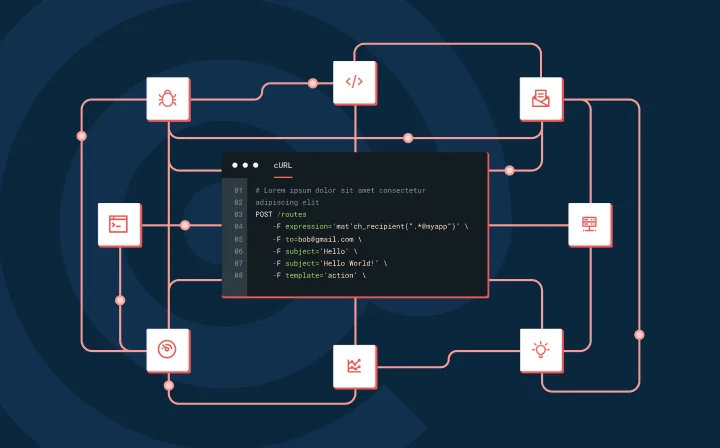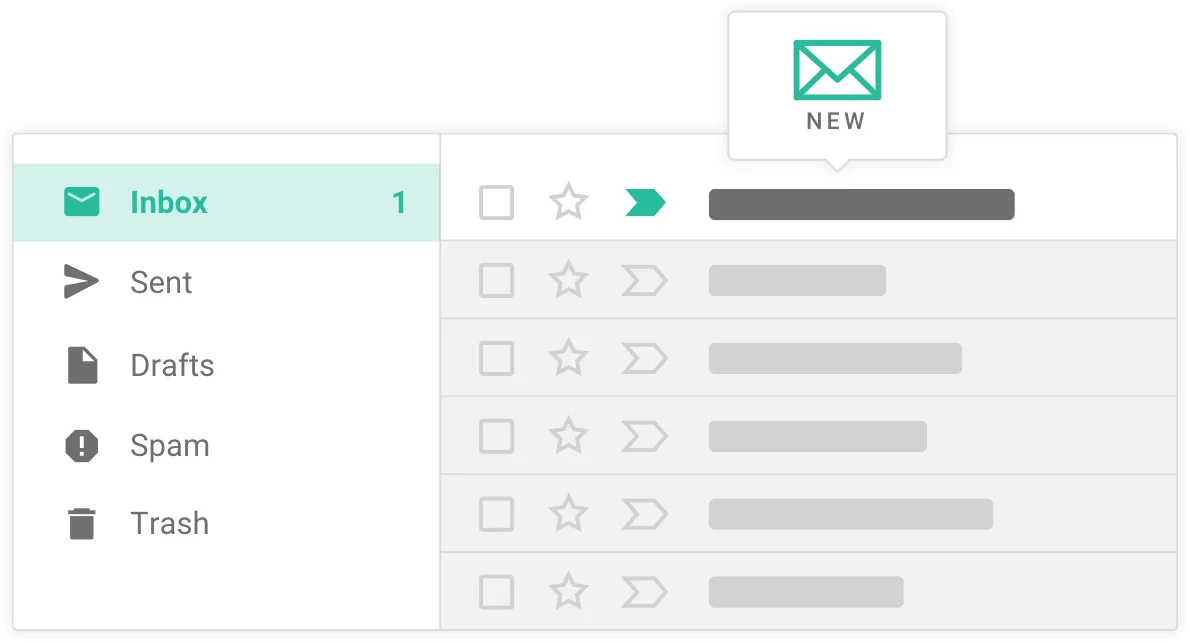IT & Engineering
How to prepare your Infrastructure for Black Friday

IT & Engineering

Black Friday – a time of year when all eyes are on the infrastructure team to keep the ship afloat. As marketers ramp up their email cadence, consumers rush to get the best deals before everyone else, putting a stressful load onto our servers.
How do you prepare your infrastructure for such a high-stakes event? It all comes down to having a stable infrastructure, planning ahead, and being agile. We’ll show you how to provide the best customer experience possible across all customer touchpoints this shopping season.
For ecommerce, Black Friday/Cyber Monday or ‘Cyber Week’ is the busiest time of the year. More and more shoppers are eager to participate in Black Friday shopping. “Cyber Week (the 5-day period including Thanksgiving, Black Friday and Cyber Monday) is expected to drive $40.6 billion in online spend, up 7.0% YoY and representing 16.9% of the overall holiday season.” According to Adobe’s annual forecast.
The traffic you will experience from Black Friday to Cyber Monday is bigger than the traffic you experience day to day, that goes without saying, so you need to be ready. We don’t want you to lose customers simply because your site is not prepared to handle the traffic. No business – big or small – should forget to prepare for those big sale days.
Over the last few years, many big brands, including Walmart, J. Crew, Lowe’s, and GAME, left millions on the table and damaged their customers’ trust due to outages and slow load times because their infrastructures prepared for Black Friday. It is not only important to focus on stock and offers, but also how you can support — and convert — all the shoppers that are coming to you. According to Shopify: A one second delay in load time costs equals a 7% loss in conversions and an 11% loss in pageviews. And that’s just one second, not a full-blown outage.
Your team of email marketers is working around the clock to funnel traffic into your web servers with a cadence of Black Friday campaigns and your platform needs to be powerful enough to sustain the increased amount of traffic. It needs to be able to process extreme peak loads and avoid costly and embarrassing website crashes through the lead-up to Christmas. In some cases, this can mean quickly expanding your infrastructure or just preparing all your resources for use on this day.
Having a stable infrastructure means that you have the capability to rebound from catastrophic failure as quickly as possible, that there is no automatic restart planned for this day, and that you make sure there are enough resources available. If you focus on these three things, you should be in a pretty good place in terms of your uptime.
To be prepared means that your infrastructure will be ready to handle a lot of traffic without you having to worry about it during Black Friday. Depending on whether you use an on-premise solution or cloud-based infrastructure, you need to consider the risks and actions required to ensure optimal functioning throughout the day.
If you are using an on-premise infrastructure, you will have to prepare well in advance for Black Friday. It is true that sometimes having your own infra is cheaper, but it can be more time-consuming because you are the one having to take care of every aspect of that infrastructure.
As any solution does, this one has its pros and cons.
Let’s start with the pros:
And now for the cons:
It is true that one of the quickest ways for retailers to scale for any amount of high traffic is to use on-demand cloud-based infrastructure. But what exactly are the pros and cons of choosing a cloud solution?
Let’s look at the pros:
But what about the cons?
Each infrastructure is unique. That means, no one solution will work perfectly for everybody. We will mention only a few tips that we think should be taken into consideration while you are planning for Black Friday.
Remember: It’s more cost effective and less stressful to be proactive instead of reactive. Plan in advance so you can scale and implement any adjustments well before the big day.
Customers are making their purchases online because it’s convenient. They avoid big store lines, and can shop for the best deals between competitors from the comfort of their keyboards.
This means that, as a seller, you should expect more web traffic during key shopping days like Black Friday and Cyber Monday. To ensure you won’t lose customers and money in any unplanned downtime or lag, you need to stress-test your infrastructure well in advance, and for multiple scenarios. This way, you will know the limit of your system and know that you can handle the amount of traffic you expect.
But how will you know how much traffic to expect? You can use machine learning to forecast demands – when you see that your volume is gradually increasing on this day, you can use the machine learning algorithms to calculate what resources you might need and request them from your cloud provider.
Check with your network provider that you can extend your bandwidth when a large number of customers attempt to enter and use your site at the same time. Most customers spend no more than 15 seconds evaluating your site and deciding if they want to stay or leave. So you need to make sure that they can open everything fast and without any issues.
A lot of brands are relying more and more on cloud solutions like Google Cloud. For example, Lush decided that Google Cloud can help them better manage site traffic climbs, storage solutions, and prevent any outages. And even more – they saved 40% of the price of their hosting solution after the migration. It might be worth it for you to take some time to learn more about the cloud infrastructure option and see if this is a good solution for you.
Hackers are always present, and most of the time, no matter how much we hate to admit it, they are really smart people.

Hackers know that you will experience a large influx of traffic on Black Friday and that these days are critical for your business. Phishing attacks alone increase around 51%. So what if a hacker doesn’t like you or your brand? They could try to ruin your best sale days. To avoid this, you need infrastructure that is not only stable but also secure.
Let’s look at the different threats you could face during this period:
A lot of consumers are only using their phones to make purchases. We get it – it’s easy! You can be anywhere, pick up your phone, and get presents for the whole family.
You need to be sure that your site loads on mobile as fast as it does on a computer, or that your mobile app is up-to-date and can handle the increase in traffic. So you need to be sure that you are using a solution (either cloud-based or in-house) that can deliver content across globally distributed points of presence.
Both the payment process and the payment success rates are crucial to your profit on Black Friday.
Don’t forget to include popular payment methods like PayPal and ease the procedure for all of your customers. You will probably have to take care of thousands of payments on such peak days, so make sure that your infrastructure can handle it and you have enough bandwidth to execute all those payments without a delay.
Another pain point is implementing return options. It is good to have an easy return policy for customers that buy items online and give them the chance to return the items quickly. Returns may not be something that will happen immediately on Black Friday, but it is a reality that Black Friday creates an influx of returns before the end of the holiday season. According to the National Retail Federation (NRF) returns are also opportunities for fraud: For every $100 returned, $10.30 of that is attributed to fraud related loss.
You can plan for almost anything, but customers will always surprise you. Imagine that your biggest competitor doesn’t prepare for Black Friday and experiences issues – some of their customers might transfer directly to you. This means that the traffic you are going to experience will be even bigger than expected.
This is why you need to keep an eye on your infrastructure during the Black Friday and Cyber Week sales. You will know if there is something you need to improve immediately or implement a hotfix. You need to be ready to react fast to keep things going smoothly and prevent any downtimes or crashes.
Our best advice is to stay agile and resilient at the same time – don’t make your system so tight that it breaks easily. Allow yourself some flexibility – double your expectations and remain diligent.
Emails are a key element in your sales activity around Black Friday, and you’ll need to pay special attention to what happens both on the days before and during the actual day.
Of course, you’ll already have sent the biggest part of your marketing campaign to tell your customers about all your discounts, but it is never a bad thing to remind them again. But sending a newsletter on Black Friday is not an easy thing because your customers’ mailboxes will be overflowing with emails.
There are several things you’ll need to plan for and pay special attention to:
In addition to preparing your infrastructure, you also need to make sure your contact list is clean and ready. Email verification can help you locate high-risk email addresses on your contact list that jeopardize your sender reputation.
Spam trap addresses, in particular, pose a risk to your ability to stay out of the spam folder. Maintaining strong engagement filtering on your contact list will prevent sending to these addresses most of the time. However, depending on the frequency of your contact, you may not have up-to-date information on these addresses.
But spam traps are not the only risky email addresses. Catchall domains (a domain that accepts any email address) are often used to feed blocklists. It can be challenging to know which addresses at these domains are legitimate and which do not exist.
Email verification can help you identify spam tramps, catchall domains, and role-based addresses (webmaster@mailgun.com, sales@mailgun.com) that often cause high bounces and spam complaints. To protect your deliverability, make sure you check the health of your email list and segment out any high-risk addresses before sending your Black Friday campaigns.

On the marketing side, something that you need to consider is that there should be constant monitoring of your email deliverability. There are a lot of emails to be sent, and the ISPs can react badly. Using a tool like Inbox Placement will allow you to monitor where your Black Friday campaigns are landing and optimize accordingly.
Here are a few steps to follow as you plan your Black Friday email sending:
During high peak seasons, most of the ISPs heighten their anti-spam and security policies. Because of that, if you don’t have your own compliance or deliverability team to monitor your reputation as a sender, it might be better to consider outsourcing your emailing infrastructure.
Your customers know that you are offering amazing discounts for Black Friday and they’ve decided to stop by your site to buy something. They see a nice K-Pop Funko they like (no judging!), press “Buy” and it’s done. It is time for your transactional emails to shine.
Of course, you can create a beautiful transactional email, but what if it never arrives in your customer’s mailbox? This is something you never want to even hear about, and especially not on a day like Black Friday.
The most important thing is to be ready to handle a high volume of transactional emails. Transactional emails include new account creation messages and password resets, and if those emails are not delivered on time, it will mean that you are losing a customer, or keeping them locked out of their account. No one wants to wait hours for an email to arrive just to give you their money.
Then we’ve got order confirmations and delivery notices, and there’s hopefully going to be a lot of those during Black Friday, more than any regular day! On Black Friday, every buyer will be eager to receive this confirmation in minutes, or seconds, to be sure that everything went well and their purchase will be delivered. If those emails are not delivered, you may see a lot of customers asking you on Twitter, via chat, or even by phone.
The 2024 State of Email Deliverability report revealed that 48% of senders say staying out of spam is a top challenge. This is particularly critical for transactional emails during Black Friday, as customers expect immediate confirmation of their purchases. Ensure your infrastructure is optimized to handle increased volumes while maintaining high deliverability rates.
Your email infrastructure will need to be ready for the increased email volume too and to do so, you’ll need to look at the sending speed and scalability. On days that you expect to send high volumes – whether they are the last marketing reminders for the sale or transactional emails that need to be sent on time – your email infrastructure should be ready too. Again, things can be a little different if you have an in-house email infrastructure vs. working with a third-party solution.
Having your email infrastructure in-house is not so different than having any kind of on-premise infra – you need hardware, configuration, monitoring, and maintenance ready. When you need to send more emails you will have to adapt to all this and invest more money to meet higher email demands. So this can be more expensive than just outsourcing your email solution to an ESP.
By having your email infrastructure outsourced to a cloud-based solution, you pay a slightly higher subscription for such high sending peaks, but take comfort knowing someone is taking care of your deliverability and will be there to help in case you need it.
Once all the extravaganza of Black Friday and Cyber Monday is over, it’s important to check all the information you have gathered and analyze it. This will help you make improvements for next year and be instrumental in ensuring the rest of the holiday gifting season runs smoothly.
Black Friday is a short holiday and this has been a long list of infrastructure prep, we’ve covered the most important topics to help you get ready, but we could go on. Need more insights on how to make it out of Black Friday in one piece? Join our team of passionate email geeks for our upcoming webinar on Black Friday infrastructure prep.